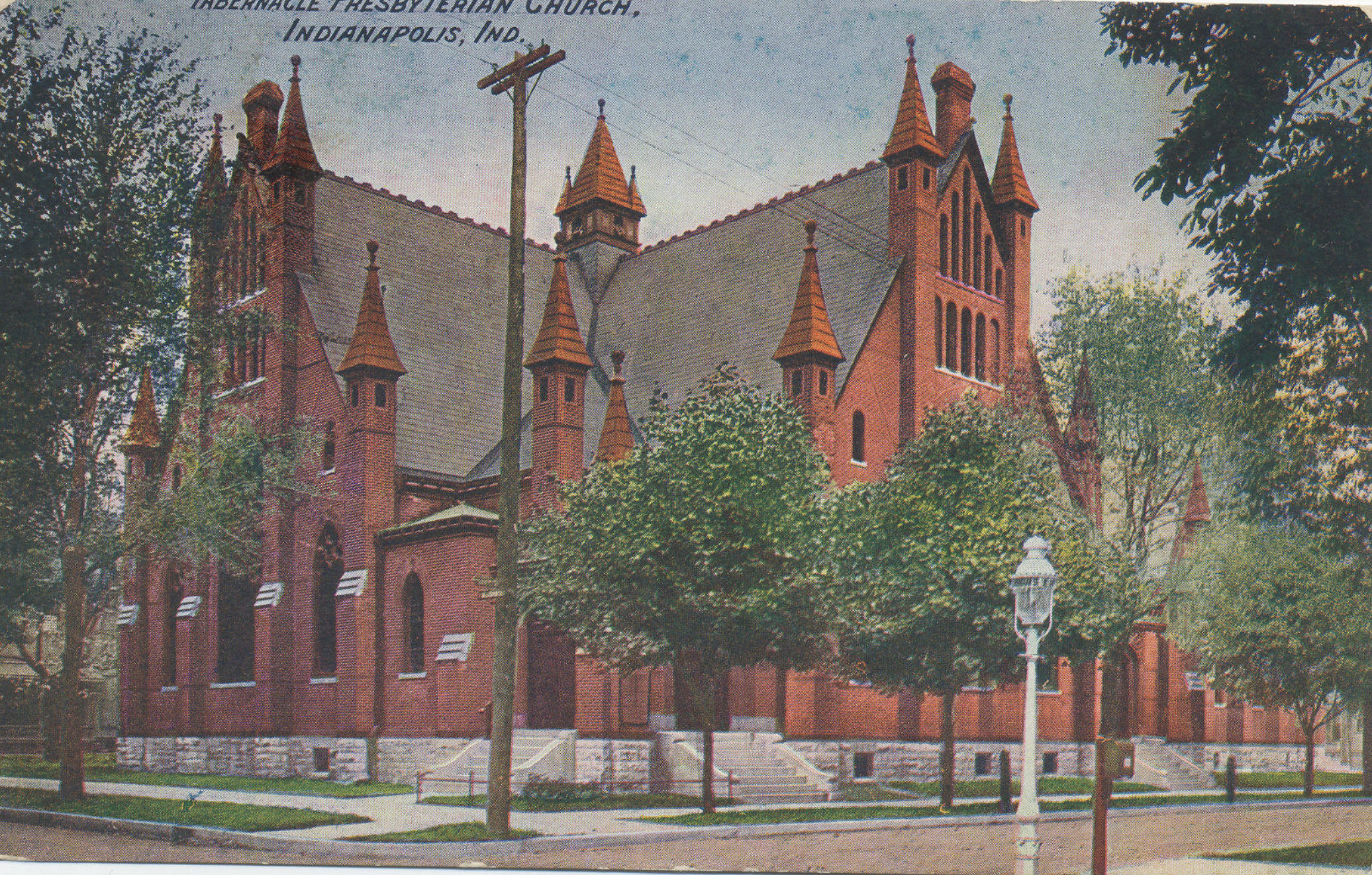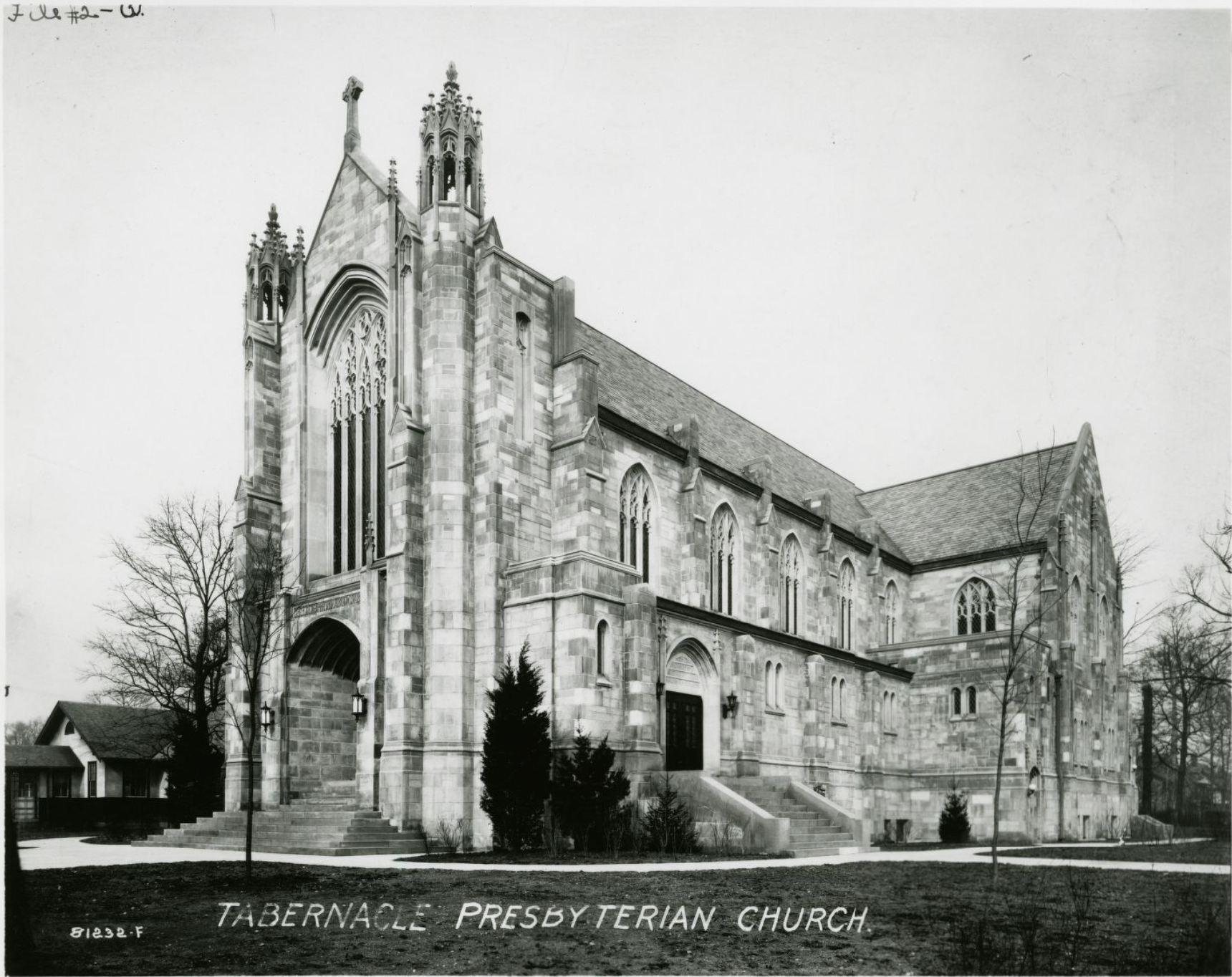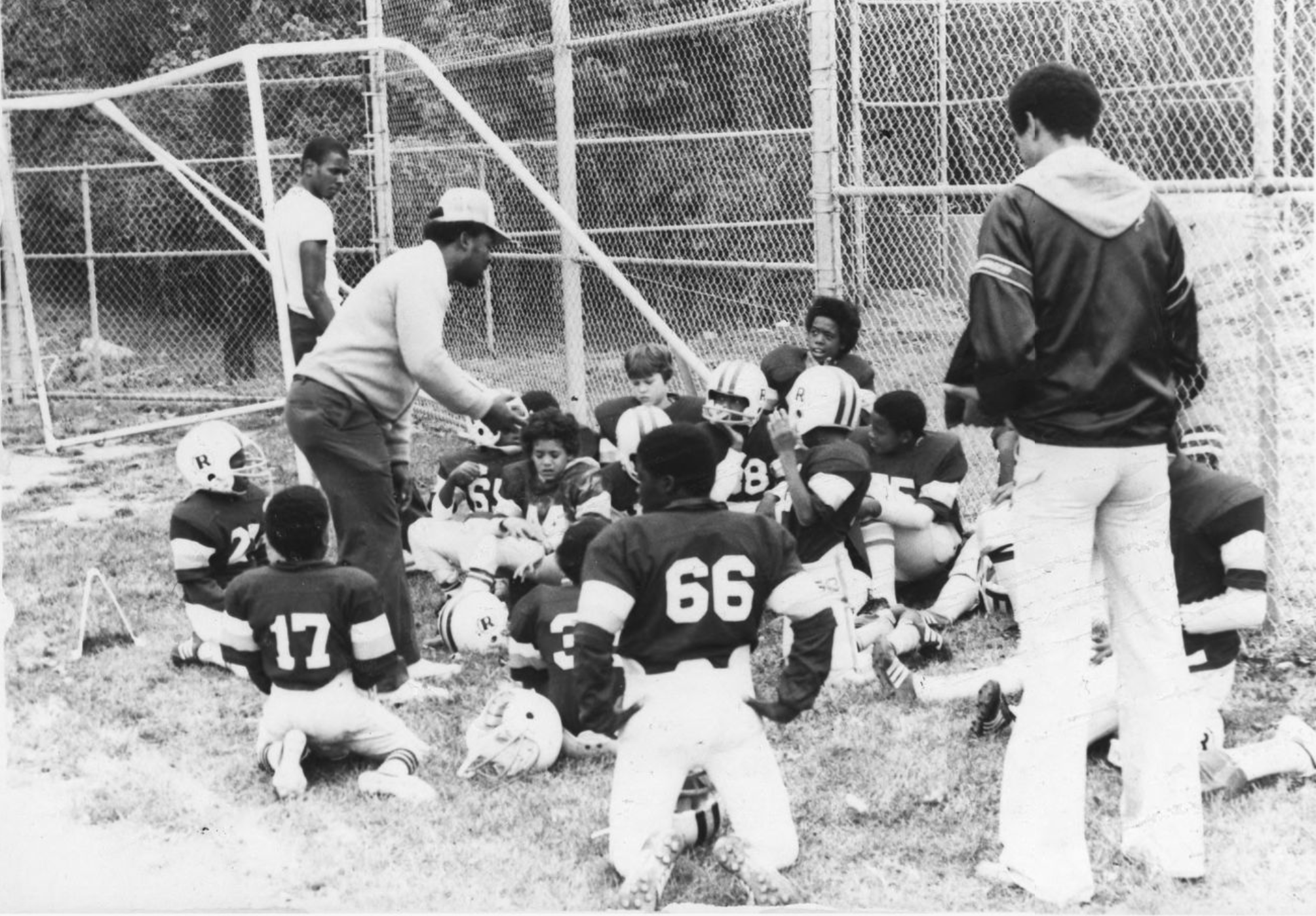On September 23, 1851, the Presbytery of Muncie met at the home of early Indianapolis political leader and voted to organize Third Presbyterian Church in Indianapolis. Scudder’s home previously had been the place where organized in 1823. Twenty-two members of First Presbyterian transferred to establish Third Presbyterian. Prominent members included Scudder, business and civic leader , Indianapolis mayor , and newspaper publisher . The first meetings took place at Temperance Hall until the congregants purchased property at the northeast corner of Ohio and Illinois streets for the construction of a church in 1853. The Norman-style brick structure was completed and dedicated in 1859.

In July 1883, Third Presbyterian Church reorganized itself as Tabernacle Presbyterian Church at the request of Reverend A. T. Pierson, who committed to becoming the pastor of the church provided its congregants change its name. The tabernacle movement of the late 19th century was an urban church strategy that welcomed the unchurched with less formal services and the elimination of pew rentals. Though the church changed its name, Pierson answered a call to a prominent church in Philadelphia instead of coming to Indianapolis, but the name Tabernacle stuck.
The church has moved twice, following its members as they migrated north. With a high concentration of churches in downtown Indianapolis in 1886, Tabernacle Presbyterian moved to the corner of 11th and Meridian streets. Here the church’s Sunday school program grew exponentially from 254 children in 1859 to over 2,000 children by the turn of the 20th century.
When congregants started building homes in the neighborhood, the church purchased a lot at 34th Street and Central Avenue in 1921. John W. Cresswell Corbusier, a leading Gothic architect from Cleveland, and Indianapolis architect designed the limestone church, which was constructed in two phases between 1921 and 1929.
English parish churches of the late medieval period inspired their plans. The sanctuary seats 1,000 people. Limestone arches separate the nave from the aisles. The chancel, pews, pulpit, and rear screen are composed of weathered oak, and timber trusses support a darkly stained English-style, wooden ceiling. Large stained-glass windows were installed during the two phases of the structure’s initial construction, but more were added through the 1950s. The sanctuary dedication occurred in 1923, and the connecting chapel and gym in 1929.

Tabernacle Presbyterian became one of the first churches in the country to establish a recreation program, Tabernacle Recreation (Tab Rec), as part of its outreach and ministry in 1924. Open to the youth congregants and community children, Tab Rec’s model for teaching children the fundamentals of team play and sportsmanship while instilling faith in Christ spread to churches throughout the country.
By 1940, Tabernacle Presbyterian became one of the largest congregations of the denomination in the country with over 3,000 members, who mostly identified as white. Mapleton-Fall Creek and Tabernacle Presbyterian remained sharply segregated 20 years later, however, the church integrated its recreation program before the passage of the 1964 Civil Rights Act. To date, the program remains a hallmark of the church’s outreach and ministry and boasts over 100,000 alumni.

The urgent question of whether to relocate as congregants moved away from Mapleton-Fall Creek to northern suburbs needed an answer in the 1960s. In 1965, the 12-member Metropolitan Community Program Committee recommended the church remain in its current location despite the migration of its congregants and the decline in overall church attendance. With the exodus of white residents to the suburbs, the racial profile of Mapleton-Fall Creek shifted. By the mid-1980s, 87 percent of the 12,000-person community identified as Black.
With strong pastoral leadership and long-term commitments from lay and staff leaders, Tabernacle Presbyterian remained a vibrant force in the community. Starting in the 1990s, the church pressed forward to establish a significant number of ministries to address the needs of the demographically altered congregants and community. The congregation founded Raphael Health Center, a federally qualified health center; the Neighborhood Christian Legal Clinic, which provides free legal services; the Open Door Ministry, which provides free meals, emergency assistance, and tutoring for children; and the a private K-8 classical school, between 1992 and 2007.
In 2015, on the 50th anniversary of Tabernacle Presbyterian’s decision to remain in Mapleton-Fall Creek, the church reaffirmed its commitment to stay in its current building among the residents of the area. The church witnessed an uptick in attendance, offering traditional worship and contemporary services, harkening to the urban church strategy of the late 19th century. The Tab Rec program continues to draw more than 2,000 children from the neighborhood and the entire city to play football and soccer on a new field the National Football League (NFL) donated to the church as one of the projects associated with , held in Indianapolis in 2012.

Help improve this entry
Contribute information, offer corrections, suggest images.
You can also recommend new entries related to this topic.

